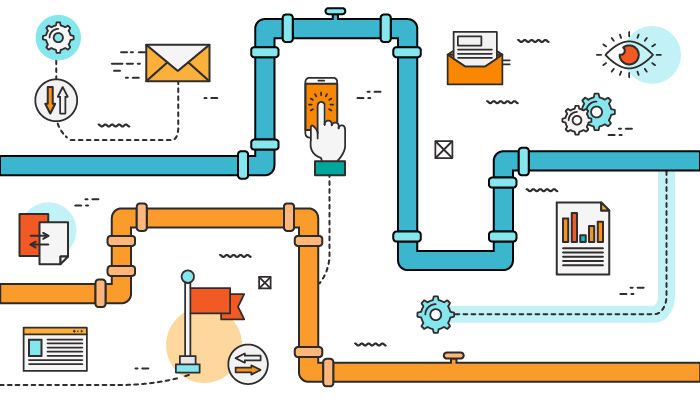In product management, prioritization is a crucial skill that determines the success of a product. Understanding how to effectively prioritize features, tasks, and initiatives can significantly impact the product’s development and market success. This article delves into three widely used prioritization models: the MoSCoW method, RICE framework, and Kano Model. We’ll explore each model in detail, provide examples, and discuss how to apply them efficiently. Finally, a comparative analysis in a tabular format will help you understand which model suits your product management needs best.
1. MoSCoW Method (Must have, Should have, Could have, Won’t have)
Overview:
The MoSCoW method is a prioritization technique used to categorize features or tasks into four distinct groups: Must have, Should have, Could have, and Won’t have. This method helps product managers and teams focus on delivering the most critical elements while managing expectations regarding less essential features.
Categories:
- Must have: Essential features that are critical for the product’s success. Without these, the product cannot function or meet user needs.
- Should have: Important features that add significant value but are not critical. These can be deferred if time or resources are limited.
- Could have: Desirable features that enhance the user experience but are not essential. These are typically the first to be cut if necessary.
- Won’t have: Features that are not necessary for the current release. These can be revisited in future iterations or releases.
Example:
Imagine you are managing the development of a new mobile banking app:
- Must have: Secure login, account balance display, and transaction history.
- Should have: Budget tracking, customizable alerts, and peer-to-peer payments.
- Could have: Dark mode, personalized themes, and gamification elements.
- Won’t have: Integration with investment platforms, which can be considered in later versions.
Application:
To apply the MoSCoW method effectively:
- Involve stakeholders to agree on categorization.
- Regularly review and adjust priorities based on feedback and changing requirements.
- Use this method in conjunction with Agile methodologies to ensure the most critical features are delivered within tight timelines.
2. RICE Framework (Reach, Impact, Confidence, Effort)
Overview:
The RICE framework is a quantitative prioritization method that evaluates potential features or initiatives based on four factors: Reach, Impact, Confidence, and Effort. It provides a score that helps product managers prioritize features by considering both their potential benefits and the resources required.
Factors:
- Reach: The number of people who will be affected by the feature within a given time period.
- Impact: The potential effect the feature will have on the user experience or business goals, usually rated on a scale (e.g., 0.25 to 3).
- Confidence: The level of certainty that the estimated Reach and Impact are accurate, expressed as a percentage.
- Effort: The resources required to implement the feature, typically measured in person-months or similar units.
Formula:
RICE Score = (Reach * Impact * Confidence) / Effort
Example:
Let’s apply RICE to prioritize features for an e-commerce platform:
- Feature A: Implementing a one-click checkout.
- Reach: 50,000 users/month
- Impact: 2 (significant improvement in conversion rates)
- Confidence: 80%
- Effort: 4 person-months
- RICE Score: (50,000 * 2 * 0.8) / 4 = 20,000
- Feature B: Adding a product recommendation engine.
- Reach: 100,000 users/month
- Impact: 3 (major enhancement in user engagement)
- Confidence: 70%
- Effort: 6 person-months
- RICE Score: (100,000 * 3 * 0.7) / 6 = 35,000
Based on the RICE scores, Feature B would be prioritized over Feature A.
Application:
To use the RICE framework effectively:
- Collect accurate data for Reach, Impact, Confidence, and Effort.
- Ensure team alignment on the scoring system.
- Reassess priorities regularly, especially after new data or feedback is received.
3. Kano Model
Overview:
The Kano Model is a customer-centric prioritization framework that categorizes features based on how they impact customer satisfaction. It helps product managers differentiate between features that delight customers and those that simply meet basic expectations.
Categories:
- Basic Needs: Features that customers expect by default. Their absence leads to dissatisfaction, but their presence does not significantly increase satisfaction.
- Performance Needs: Features that have a linear relationship with customer satisfaction—better performance leads to higher satisfaction.
- Excitement Needs: Unexpected features that delight customers. Their presence greatly enhances satisfaction, but their absence does not cause dissatisfaction.
- Indifferent Needs: Features that do not significantly impact customer satisfaction, regardless of whether they are present or absent.
- Reverse Needs: Features that, when present, can cause dissatisfaction for certain customer segments.
Example:
For a new social media app:
- Basic Needs: Secure login, messaging, and notifications.
- Performance Needs: Fast loading times, high-quality media uploads.
- Excitement Needs: AI-driven content recommendations, augmented reality filters.
- Indifferent Needs: Integration with outdated social platforms.
- Reverse Needs: Mandatory video autoplay, which might irritate users.
Application:
To apply the Kano Model effectively:
- Conduct customer surveys to identify which features fall into each category.
- Focus on delivering Basic and Performance needs first, then work on adding Excitement needs to differentiate your product.
- Continuously gather feedback to adjust feature prioritization.
Comparative Analysis
| Model | Focus | Strengths | Weaknesses | Best Used For |
|---|---|---|---|---|
| MoSCoW | Categorization of features | Simple and easy to communicate; helps in managing scope | Can be subjective; less data-driven | Prioritizing features in Agile environments |
| RICE | Quantitative prioritization | Data-driven; provides clear prioritization scores | Requires accurate data; may overlook qualitative factors | Prioritizing features with measurable business impact |
| Kano Model | Customer satisfaction | Focuses on customer delight; identifies differentiators | Can be complex to implement; requires extensive research | Designing user-centric products with competitive edge |
Choosing the right prioritization model is key to successful product management. The MoSCoW method is ideal for teams looking to manage scope in Agile environments, while the RICE framework is best for data-driven decision-making. The Kano Model, on the other hand, is perfect for focusing on customer satisfaction and innovation. By understanding and applying these models effectively, product managers can ensure that their products not only meet business goals but also exceed customer expectations.





One thought on “Mastering Product Management Prioritization: A Deep Dive into MoSCoW, RICE, and Kano Models”